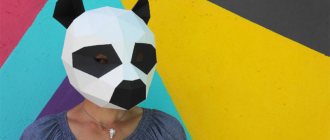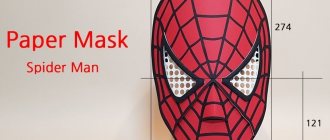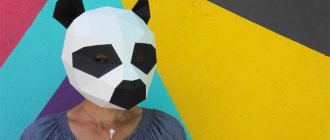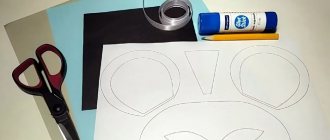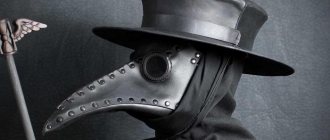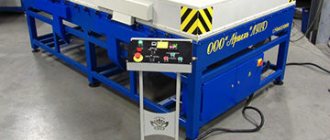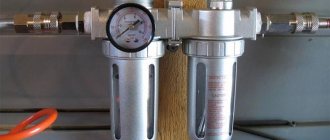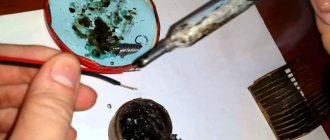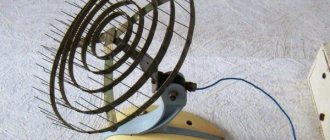- Home page
- •
- Articles on welding
- •
- Welding helmets: types, characteristics, features of choice
In this article we will look at the features and types of welding helmets, as well as what to look for when choosing
The electric arc emits bright light and ultraviolet rays that can burn the cornea of the eye. To protect your eyesight and clearly see the processes occurring in the weld pool, you need a high-quality welding mask. What they are, how they differ and what to look for when choosing, we will consider in this article.
Design
A distinctive design feature of a welder's mask with forced air supply from other protective shields can be considered its sealing. The casing is made of fire-resistant soft materials, designed taking into account the geometric shape of the head. In the neck area there are adjustable seals with locks.
The filtration system, which ensures full breathing of the worker during welding, is remote, the unit is located on the back side, and is connected to a sealed protective device by a hose. The design includes a fan powered by an autonomous, fast-charging battery. Often, for these purposes, a solar battery is used, powered by the luminous flux of an electric arc.
Replacement filter cartridges become unusable as they become dirty. Manufacturers produce these consumables with different performance characteristics and service life.
A light element with a large viewing angle is built into the front part of the helmet; a “chameleon” window is usually used; it darkens under the influence of ultraviolet radiation; the components of such a screen significantly reduce its throughput in a certain part of the spectrum only at the time of welding. The use of a color-changing liquid crystal filter allows you to control the quality of the weld without removing the protective mask.
Principle of operation
The mask is put on before connecting the welding electrodes; it is not intended to be worn for a long time; the battery capacity of the filtration unit is small. When the fan is turned on, air enters the filter, then is forced under the casing into the nose area, blowing on the welder’s face. The exhaled mixture is disposed of through a check valve.
Sealed air-supplied protection has a number of advantages:
Difficulties in working with such a mask arise when working in cramped conditions: it is necessary to monitor the integrity of the air supply hose. Operation requires additional costs for the purchase of replacement filters. The cleaning unit requires recharging from power supplies.
Forming corners
After removing unnecessary parts of the cardboard, I create four overlays. They will be used to glue the parts together:
- I form the contours of the mask, the corners of which will be held in place by the overlays.
- First, I grab the parts with pieces of tape.
- Then I glue the parts together using a hot gun.
- I look at a bright light (desk lamp) to check that there is no lamp light coming through the connections.
How to choose a mask with an air supply system
Manufacturers offer more than 80 types of blower masks used for welding work in hazardous conditions.
They are divided according to the degree of air purification, blowers, and electrical supply elements. Models Airtek, Monsoon 200, Optrel have the maximum degree of purification and are equipped with a turbo unit. Monsoon 1000 filters operate with lower efficiency and provide P2 protection level.
The filter size varies from 90x32 to 110x93. If the welding zone is visible, a small window is sufficient. For work near walls, on ceilings, in closed containers, it is better to choose a mask with a large view, in this case the load on the neck is reduced.
The degree of darkening of the filters varies from 2 to 5 units, the marking corresponds to this indicator. Fifth filters are used in good light conditions, for street work. The premises need No. 3 and No. 4. In poorly lit spaces, it is more convenient to work with the second degree of darkening of the filter. “Chameleons” are marked differently: from 5 to 15 DIN. Masks with liquid crystal windows are additionally equipped with a power supply system and sensors.
For arc welding, where the electrodes melt, glass is more suitable. It is less affected by sparks. “Chameleons” are used for argon welding; tungsten electrodes do not spark.
Masks are made from various materials, the minimum weight of the protective casing is 350 g, the maximum is 900 g. In this case, during a lowering jerk, the load on the spine will be considerable; it is not suitable for long-term work. The lightest material is pressed cardboard, but it is susceptible to moisture and deforms when swelling. Suitable for interior work only. Plastic is stronger, it is wear-resistant, but the specific gravity of plastic is much greater.
Turbo blocks and mask ventilation, homemade.
made on the basis of a 90 mm sewer cross. (or in my case a cross of 3 corners)
filters from respirators “Puls-K” or “Puls-M”
and a dual 40 mm fan.
top view without “lid”:
“cover” with fan, speed controller and power connector
The “lid” is made of a 90 mm socket. and planes from a short reduction of 110 mm. For welding, the plane was melted along the radius with a heated mug of suitable diameter.
Dual anti-rotation fan 40 mm.,
with a pressure of 50 mm. or 2 inches of water, or 500 Pa.;
12 V x 1 A or 24 V x 0.5 A depending on connection.
The fan is connected to the outlet pipe with two rubber adapters for 40/50 mm sewerage.
each socket has 2 filters,
view with the 1st filter cover removed:
view with the housing of the 1st filter completely removed, view of the 2nd filter with a connecting tube (the tube from the hose for the washing machine is taped with electrical tape or a rubber ring to the second filter):
view with the 2nd filter removed, complete with sealing ring and connecting tube:
The weight of the turbo unit with belt and without battery is about 1 kg.
Air duct assembly with headband Speedglas 9100
The tee is made of PP angle 45° and ∅32 mm. and from the thread from a 25 mm compression fitting.
A PVC hose for 32 mm wiring was shaped using a hot air gun:
Hose from a vacuum cleaner, connectors/seals from a sewer system 40/50 mm.
Post edited by brat_h: 17 August 2022 16:49
Made on the basis of a 110/50 tee at 45°
Computer centrifugal fan “snail” 97x33 mm. (full size, assertive, quiet)
with approximate minimum parameters
and PAF filters, from the Soviet Depth (with a filter element type “PF-4”, ∅ 104 mm, thickness 20 mm. protection class P2 according to the passport, similar to filters for F-62Sh)
view from the side of the bell with the double filter removed, a piece of tube under the fan as a spacer for fixation
view from the pipe side, with power connector, speed/voltage regulator:
double filter. The cover of the first filter is processed so that the second filter can be screwed into it, then the thread from the gas mask tube is used to seal the second filter with the thread of the first. The first filter is inserted into the socket of the tee in its housing (as in the two photos above), into the thin pipe of the tee the first filter is simply inserted with a lid:
a tee made of two 20-angle angles at 45° and again threads from a 25 mm compression fitting.
air duct tube from the washing machine drain
air duct holder made from a paint bucket lid with a protrusion/ridge, useful for mounting to the headband.
Post edited by brat_h: 17 August 2022 19:15
BCB75x80x30mm.pdf 455.17K 16 downloads
is probably suitable in size . Preferably "Delta BCB0812EHN"
Here is another ventilation option in the form of a muzzle.
The tube tightly “hugs” the head, suspended on the head on a strap from Puls K, and the muzzle is from the same.
It can be removed/attached by assembling/disassembling the tube with a tee.
Since the muzzle from "Pulse K" is nothing more than a tool for sadomasochism, it is better to choose something like
Making a wooden handle
The handle is made of ordinary wooden beam:
- On one side I cut it at an angle, and on the other side I trimmed it with a knife to give the handle a round shape that is comfortable to hold in the hand.
- Then I glued the handle to the mask using hot glue.
- From the inside of the mask I put a piece of thin plywood and use a self-tapping screw to additionally secure the handle.
The yellow arrow points to the hole in the handle, which is intended for hanging the mask on a nail in the wall.
Welding mask with air supply
Welding work in a gas-filled and dusty environment, in confined spaces with limited volume, requires an individual respiration system. For this purpose, a welding mask with air supply is used. This device provides comprehensive protection during work.
Welding mask with air supply
Industrial masks are additionally equipped with alarming sound and light signals that notify:
Design
A distinctive design feature of a welder's mask with forced air supply from other protective shields can be considered its sealing. The casing is made of fire-resistant soft materials, designed taking into account the geometric shape of the head. In the neck area there are adjustable seals with locks.
Air supply welding helmet design
The filtration system, which ensures full breathing of the worker during welding, is remote, the unit is located on the back side, and is connected to a sealed protective device by a hose. The design includes a fan powered by an autonomous, fast-charging battery. Often, for these purposes, a solar battery is used, powered by the luminous flux of an electric arc.
Welding mask with air supply
Replacement filter cartridges become unusable as they become dirty. Manufacturers produce these consumables with different performance characteristics and service life.
A light element with a large viewing angle is built into the front part of the helmet; a “chameleon” window is usually used; it darkens under the influence of ultraviolet radiation; the components of such a screen significantly reduce its throughput in a certain part of the spectrum only at the time of welding. The use of a color-changing liquid crystal filter allows you to control the quality of the weld without removing the protective mask.
Principle of operation
The mask is put on before connecting the welding electrodes; it is not intended to be worn for a long time; the battery capacity of the filtration unit is small. When the fan is turned on, air enters the filter, then is forced under the casing into the nose area, blowing on the welder’s face. The exhaled mixture is disposed of through a check valve.
Operating principle of a welding helmet with air supply
Sealed air-supplied protection has a number of advantages:
Installing glass
I purchased tinted glass for welding work at a local store. Its shade number is 10. It only costs a couple of dollars.
- I determine the location of its installation inside the mask - I outline it with a marker.
- Then I cut a hole for it.
- To prevent the glass from falling out, I make two cardboard frames for it.
- I place the glass itself inside the frame and glue it into the mask.
- I also check in bright light to make sure no light penetrates inside through the cracks.
How to choose a mask with an air supply system
Manufacturers offer more than 80 types of blower masks used for welding work in hazardous conditions.
They are divided according to the degree of air purification, blowers, and electrical supply elements. Models Airtek, Monsoon 200, Optrel have the maximum degree of purification and are equipped with a turbo unit. Monsoon 1000 filters operate with lower efficiency and provide P2 protection level.
Welding mask with air filtration system Monsoon 200
The filter size varies from 90x32 to 110x93. If the welding zone is visible, a small window is sufficient. For work near walls, on ceilings, in closed containers, it is better to choose a mask with a large view, in this case the load on the neck is reduced.
The degree of darkening of the filters varies from 2 to 5 units, the marking corresponds to this indicator. Fifth filters are used in good light conditions, for street work. The premises need No. 3 and No. 4. In poorly lit spaces, it is more convenient to work with the second degree of darkening of the filter. “Chameleons” are marked differently: from 5 to 15 DIN. Masks with liquid crystal windows are additionally equipped with a power supply system and sensors.
In this article:
Welding masks are made from fiberboard and fire-resistant plastic. The first option is easier and cheaper. But the cardboard gradually loses its shape, the helmet warps, and may come apart at the corners (assembled with brackets). Cardboard is able to absorb moisture if the personal protective equipment is stored in a room with high humidity of 70-80%.
Plastic masks differ in material thickness and composition, which affects weight. Cheap models may melt or stick if accidentally placed on a hot surface (such as a newly welded seam). Expensive plastic masks are completely non-flammable and can withstand high temperatures. They are resistant to moisture and do not deform during use. For infrequent use, you can save money and buy a cardboard shield. If you plan to cook regularly, choose a plastic option.
View window size
The size of the viewing window for welding helmets can be minimal - 89x39 cm or maximum 110x90 cm. There are many intermediate options: 100x60, 90x60, 110x60, etc. If you have to weld small parts only in the lower position, any viewing window will do.
It is more convenient to carry out work on large structures that require numerous seams in masks with good visibility. Then you won’t have to twist your neck, but just turn your eyes slightly to see the joint clearly. Such masks are useful for welding pipes close to a wall, floor, and making ceiling seams. In this case, pay attention specifically to the size of the light filter, and not the outer glass, since the outer screen can be much larger than the viewing window itself.
Filter type
The filter, which protects the eyes from harmful radiation, can be permanently darkened for conventional welding helmets or automatic. In the first case, black glasses are used, each of which is assigned a number indicating the strength of the darkening. Almost nothing is visible through them until the welding arc is lit. This makes it difficult for the electrode to accurately hit the joint; you can miss and leave marks nearby on the front side, which will then have to be cleaned up. After welding, the quality of the seam is not visible through the light filter and the helmet is raised to inspect the connection.
Automatic darkening is implemented in chameleon masks. They use liquid crystals and sensors that respond to an electric arc flash. In the cleared state, the crystals are located across the cross section of the glass and provide acceptable visibility to the welder. Using the mask, you can accurately point the electrode or torch at the joint, examine the quality of the seam, assemble simple structures and immediately proceed to tack welding.
How to make a mask with an air supply system with your own hands
Homemade welding mask with air supply
To make personal protective equipment you will need:
After assembling the device, the fan turns on, you can put on a mask and start working.
Often in garages or personal workshops you have to weld oily or dirty metal. This is often associated with significant air pollution. If you make your own sealed casing with a supply of clean air, you can work without harm to your health.
Source
Welding mask with air supply
When working to weld metal, you often have to be in conditions that are harmful to your health. Excessive dust and gas contamination in the premises often occurs. To protect the master from the influence of all these phenomena, a welding mask with air supply is used. The main feature of this device is the filtration system, which is connected together with ventilation. Its operation depends on the ventilation unit. This unit runs on a battery, so you should monitor the charge level. For ease of use, various warning signals are used here, which notify with sound and visual effects that the filtration system is discharged or dangerous contaminants have entered it. Thanks to this, work safety is significantly increased.
Welding mask with air supply
If you use a standard welding transformer, then the need for such a product does not arise as often as when working with gas. There are several levels of cleaning intensity, which depend on the manufacturer and other features. This is a fairly complex technique, so repairing a welding helmet with your own hands is very difficult, and sometimes even dangerous, since using damaged or incorrectly repaired products can be hazardous to health. Products are manufactured in accordance with GOST 1361-69.
Forced air welding helmet
Welding helmet selection options
Location of controls
Adjustment of response sensitivity and degree of dimming is carried out by two “knobs” that interact with the electronic board. They can be located both inside the helmet and outside. In the first case, you will need to remove the mask, take off your gloves (the wheels inside are very small) and make adjustments. This is acceptable when adjustments are not needed often. In the second case, you can change the sensitivity and darkening strength directly while welding, which is convenient when frequently switching between welding thin and thick metals.
Power type
Chameleon masks are powered during operation by absorbing light from an electric arc by a solar panel. While welding is not in progress, a battery or accumulator is used for starting energy. The batteries will have to be changed periodically, but the battery will last longer.
Optical class of lens
The characteristic is indicated by four numbers, written separated by a slash. They indicate the following properties:
- Image accuracy.
- Level of light dispersion.
- Uniformity of light transmission.
- Effect of viewing angle on light transmission.
The number 1 indicates the first, i.e. top class in every category. For example: 1/1/1/1 is a lens with the best parameters for clarity, light transmission and uniformity. In a mask with a 1/2/1/2 lens, the picture will not be as clear, the corners may be darkened.
When welding channels and other large structures, high image detail is not needed. It is enough to clearly see the edges of the joint and the turns of the seam line. Therefore, any lens will do here. But when argon welding of thin metals 0.6-1.0 mm at low currents there is little light from the arc, so you need high picture quality. In this case, buy a helmet with a 1/1/1/1 lens.
Head design
There are three-rack and four-rack options. The latter fit more securely on the head and have a greater number of adjustments. Choose a four-bar headband mount if you often move around wearing a mask, cook while leaning over the railing, etc.
Distinctive features
A welding helmet with air supply is a multifunctional device. Unlike other analogs that do not have similar functions, it provides a more tight fit to the welder’s body. Thanks to this, everything is isolated from external influences. In this case, the natural supply of air becomes difficult and forced injection is required. The presence of a ventilation unit that provides this injection is the main distinguishing feature of this product. Modern models have a cleaning filter that creates normal breathing conditions, regardless of the conditions outside. The welding helmet headband here has additional fastenings for stability. It is also worth noting the presence of additional batteries that work with filters and ventilation. You should always check that they are working correctly to avoid accidents.
Design features and operating principle
A welding helmet with air supply is noticeably different from other, simpler options. When the welder puts on this product, the ability to breathe outside air stops. Now the supply is made through a thin filter that allows air masses to pass through it. The filter is cleaned, after which everything is fed inside the helmet. The cleaning basis of the filter are special cartridges, which may have different characteristics, depending on the model and manufacturer. They should be selected depending on the required degree of protection, since the cost can vary widely, and over time, after a certain period of operation, the cartridge becomes dirty and becomes unusable.
Air Welding Mask
Models are developed taking into account the physiological nuances of the human body. The contours fit perfectly to the oval of the face, which ensures tightness. The design also has an additional seal made of fire-retardant material. In addition, there are all the protection functions against molten metal and sparks, as in standard masks.
Homemade welder's mask. I'm thinking of doing it
Homemade welder's mask.
I'm thinking of making one. Has anyone made a homemade mask? I was thinking about making a homemade welder’s mask. There is a chameleon filter, and there is electric cardboard. yellow (natural color, not dyed). what I want from a mask: 1. that it fits the shape of my face, that is, much smaller than the standard one that I have. (chamelion) 2. I would like to be able to make a sliding filter so that I don’t have to take off the mask when I want to look properly. p2. can be implemented using magnetic plates. Friends have attached a magnetic plate 1-2 mm thick to their refrigerators. with some kind of advertisement. So, if you place a steel plate on the mask, and attach such a sheet magnet to the filter (figuratively, the design may be different), then it will be easy to remove and install. and most importantly it should turn out tight. but you can also make a sled. Maybe there are some other ideas on how to make a homemade welder’s mask. I'm thinking of doing mygolf (today, 20:00) wrote:
1. so that it matches the shape of the face,
If the issue of breathing is not important, why not do it...
mygolf (today, 20:00) wrote:
2. I would like it to be possible to make a sliding filter
A sliding one will be inconvenient, make a folding filter Homemade welder's mask. I think I tried to make it out of linoleum - I bought an inverter, there was a filter for a mask lying around at home, but there was no way to buy the mask itself. I riveted a similar one from linoleum, installed a filter and got electroophthalmia!!!! It turns out that ultraviolet light passes unhindered through many thin materials. Therefore, I would not advise risking your eyes - the cheapest masks I saw cost 35 rubles - so you can modify them as much as you want. As for the yellow electrical cardboard, I very much doubt that this is really electrical cardboard for masks, which is dark by definition... Homemade welder’s mask. I'm thinking of doing it
mygolf (today, 20:00) wrote:
1. so that it matches the shape of the face,
Here is the topic https://www.chipmaker.ru/topic/44307/ Homemade welder’s mask. I'm thinking of doing it
TRRRaktor (today, 21:15) wrote:
I tried to make it out of linoleum - I bought an inverter, there was a filter for a mask lying around at home, but there was no way to buy the mask itself. I riveted a similar one from linoleum, installed a filter and got electroophthalmia!!!! It turns out that ultraviolet light passes unhindered through many thin materials. Therefore, I would not advise risking your eyes - the cheapest masks I saw cost 35 rubles - so you can modify them as much as you want. Regarding the yellow electrical cardboard, I very much doubt that this is really electrical cardboard for masks, which is dark by definition... I really sympathize with you, I’m afraid for my eyes. By the way, if the mask is not tight, then ultraviolet radiation is reflected from clothing and surrounding objects, especially if you cook the car while lying on the ground. or there is a wall behind you. linoleum, if you look in the sun, usually shines through. It's a shame you didn't know it was loose. I recently bought a mask made of electric cardboard, painted with regular or unusual paint. That’s why I came up with the idea about electric cardboard. branded cardboard, Soviet, that is on old masks. differs in thickness and texture.
I riveted a similar one from linoleum, installed a filter and got electroophthalmia!!!! It turns out that ultraviolet light passes unhindered through many thin materials. Therefore, I would not advise risking your eyes - the cheapest masks I saw cost 35 rubles - so you can modify them as much as you want. Regarding the yellow electrical cardboard, I very much doubt that this is really electrical cardboard for masks, which is dark by definition... I really sympathize with you, I’m afraid for my eyes. By the way, if the mask is not tight, then ultraviolet radiation is reflected from clothing and surrounding objects, especially if you cook the car while lying on the ground. or there is a wall behind you. linoleum, if you look in the sun, usually shines through. It's a shame you didn't know it was loose. I recently bought a mask made of electric cardboard, painted with regular or unusual paint. That’s why I came up with the idea about electric cardboard. branded cardboard, Soviet, that is on old masks. differs in thickness and texture.
desti (today, 20:27) wrote:
mygolf (today, 20:00): 1. what would it be according to the shape of the face, If the issue of breathing is not fundamental, why not do it.. mygolf (today, 20:00): 2. I would like to see what could be done sliding light filter A sliding one will be inconvenient, they make a folding filter, but it won’t fit well, it will turn out to be a folding standard one. I wanted to use it + but the ones I saw, including in your picture, are much smaller in size than the chameleon’s filter, and even with sensors and adjustment.
Post edited by mygolf: 26 September 2010 — 21:56
Homemade welder's mask. I'm thinking of doing it
I always wanted to have one of the available masks that was easy to transport, folding and unfolding. For field work.
Homemade welder's mask. I’m thinking of making it Once in the early nineties, I also made a homemade mask for working with a homemade apparatus. The mask was made from tin. There is no need to talk about any advantages of the design, but I worked with it for a couple of years. Homemade welder’s mask. I’m thinking of making one. Like Desti already posted - the best welding mask)
Attached images
Homemade welder's mask.
I'm thinking of making Kremator, Kremator (today, 20:40) wrote:
I think Desti already posted it - the best welding helmet)
I posted this mask. I once analyzed the best option for a welding helmet - I came up with the idea that you need to take an infantry gas mask for nuclear war and put a tank helmet on it. I made my first mask based on a tank helmet. I just couldn’t find a gas mask with such glasses. I made do by sticking a Soviet mask made from electrical cardboard to the helmet. Homemade welder's mask. I'm thinking of doing it
Gideon (yesterday, 21:07) wrote:
I'm sorry
There is another interesting picture from the Internet on the same topic:
Attached images
www.chipmaker.ru
